Outside of Queenstown, there’s no place in New Zealand that represents the country’s adventurous spirit and incredible landscapes better than Rotorua. It’s a hotbed of geothermic activity, with ancient volcanic eruptions leading to giant calderas, chromatic pools, and soaring geysers.
The small city is home to under 80,000 residents, yet surrounded by 18 lakes and three major rivers. When you aren’t admiring the passionate local food scene, you’ll be exploring the distinctive landscapes that are arid and lush at the same time.
But behind every tree and mountain is a story to be told. Rotorua is the place to learn and experience Maori culture. Hear the legends behind the amazing landscapes that provide tangible meaning to the world around you.
Here are the best things to do in Rotorua:
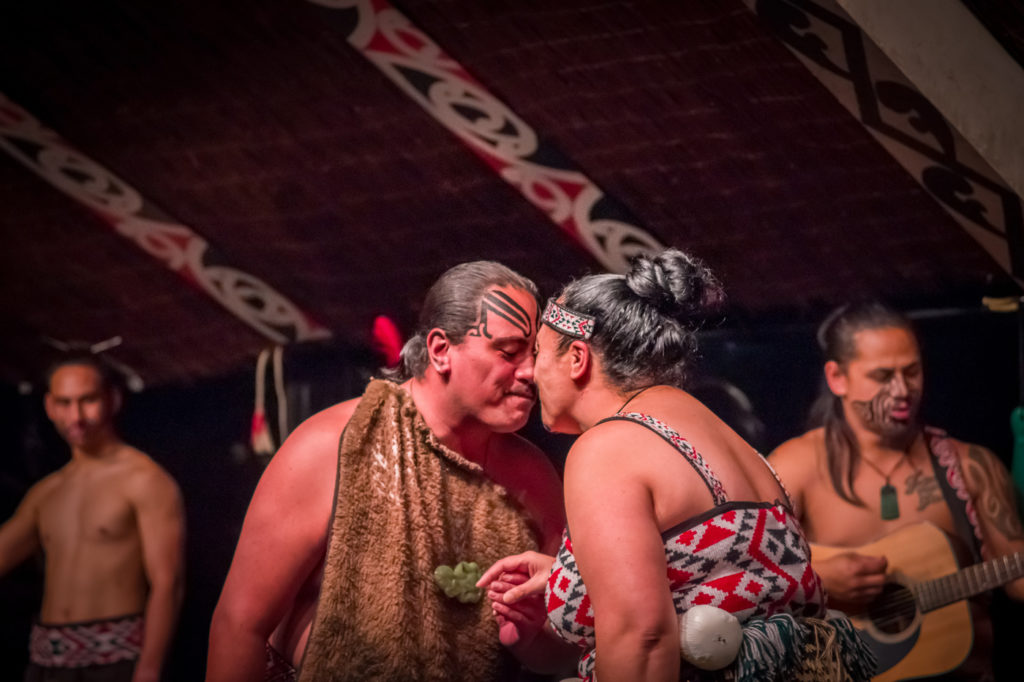
Experience the Exceptional Tamaki Village
Minutes from downtown Rotorua, Tamaki Maori Village is an award-winning cultural phenomenon. Wander into the village perched in the ancient forest and see Maori history and legend come to life. Upon arrival, you’ll receive a traditional Maori welcome ceremony before exploring the authentic village as it would have been before colonialism.
As you wander through the Tawa Forest, with its dense green canopy, you can’t help but feel the immense spirit of the village. It’s as if nothing has changed with each tribal member dressed in traditional garments ready to teach you their heritage. At each section in Tamaki Village, you’ll have an interactive experience, whether that be learning the haka or the poi, or hearing captivating Maori legends.
A part of what makes the experience so special is how genuine it is. It’s a firsthand experience, a living village where the tribe is showcasing their way of life, not that of someone else. After the initial tour, you’ll learn about the hangi (food cooked underground) before enjoying a cultural show and a delicious communal dinner.
Don’t leave it to the last minute. Book your tour of Tamaki Village through Get Your Guide.
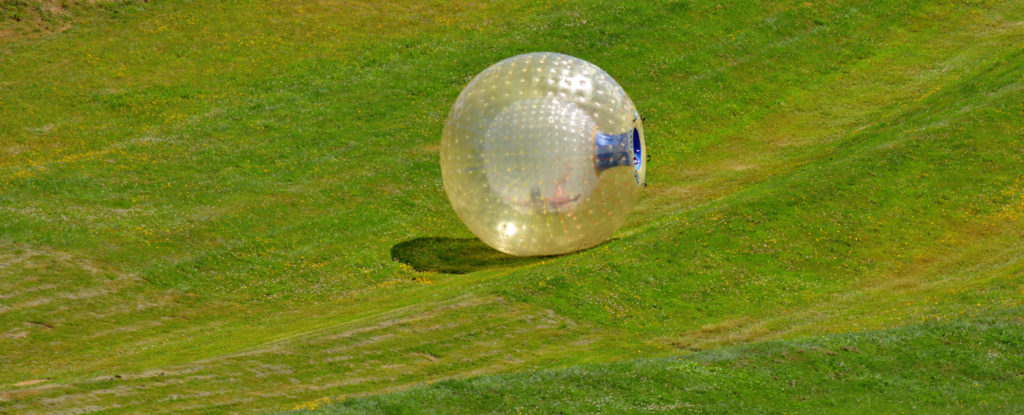
Go Zorbing
As you make your way into Rotorua, you may spot these translucent golf balls tumbling down the local hills. If you hadn’t previously heard of zorbing, then it’s bound to be a confusing sight. But the adventurous experience that’s slowly taking over the world was actually invented right here in Rotorua.
With its mountains, rivers and volcanoes, New Zealand is the adventure capital of the planet earth. So being the home of zorbing is simply par for course in the minds of locals and there’s no better place to experience the madness than here. A zorb is an inflatable ball that guests climb inside before zooming down the hill. There are a variety of experiences to choose from, including the classic single rider, tandem and some zorbs are even filled with water. No, you won’t drown. You’ll even have the choice between a balmy bath and a refreshing soak.
Book your zorbing experience before arriving in town. This one even comes with a celebratory hot tub with epic views of Lake Rotorua.
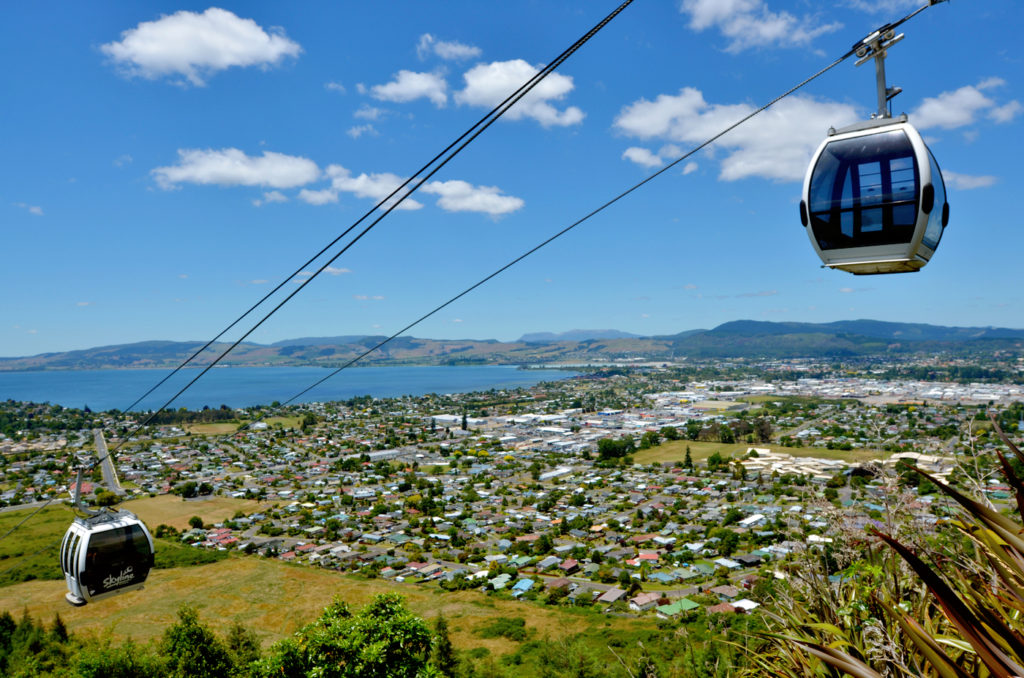
Capture the Views With the Skyline Gondola
The perfect way to get your bearings in Rotorua is to take the Skyline Gondola. The funicular whisks you up from the valley to the top of Mount Ngongotaha. It’s a short and sweet journey that lays out the entire countryside for your eyes to feast on. Not only will you spot Lake Rotorua, but far-off mountains with the city spread out like a 2D map. So be sure to have your back facing the mountain so you can enjoy the vistas.
The Skyline Gondola, however, is simply the appetizer. What awaits at the top is a buffet of adventurous activities and one of the best places to go for date night. Travelers of all persuasions will have something to look forward to, including the downhill luge and a hair-raising sky swing that involves speeds of up to 75 miles per hour (120km/h).
As the sun falls, enjoy the best seat in the house as you watch Rotorua be enveloped in warm sunset colors. Head over to the Aorangi Peak Restaurant for panoramic views of town and the lake glistening against the star-lit sky.
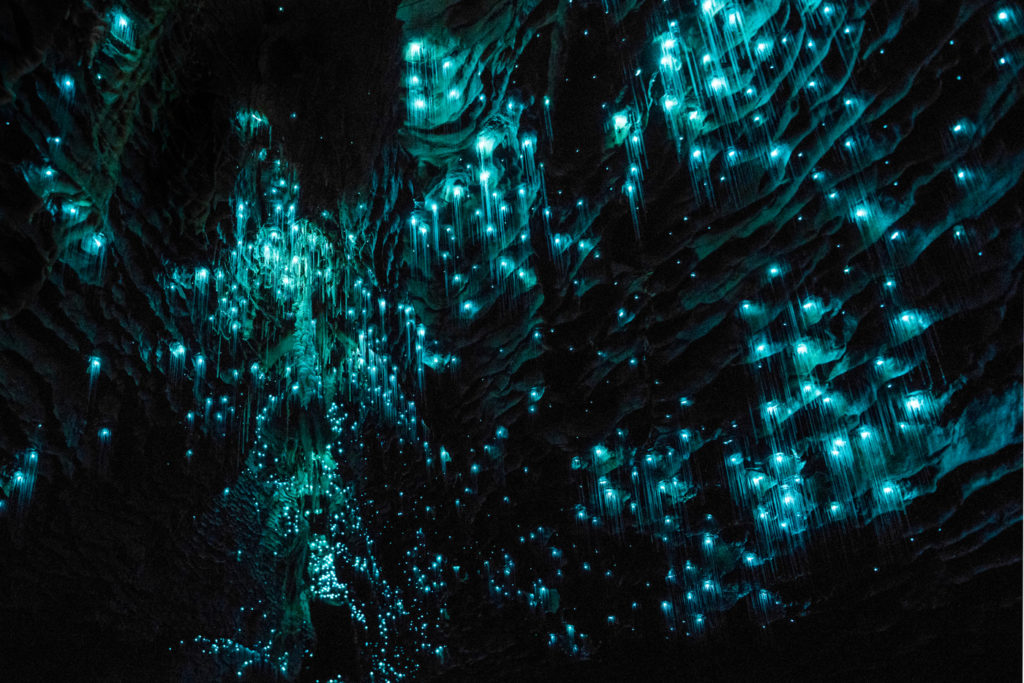
Wander Into the Waitomo Glowworm Caves
Featuring a vast limestone labyrinth, the Waitomo Caves are a spectacular site. Under two hours east of Rotorua, the caves are littered with glowworms, that light up the ceiling showcasing a world of stalactites dangling from the ceiling. The glistening worms create an effect similar to an effervescent sky, with its slight also shining down on the large stalagmite mounds rising from the floor.
A tour of the caves will bring you deep into the underground system by wandering over 800 feet (250m) into the abyss. The best part? You get to do it all from the cozy confines of a boat. Alongside your guide, float into the subterranean world on water.
Many of the Waitomo’s guides are in fact direct descendents of the Maori chief who first discovered the illuminated caves. So in addition to learning about the geology of the cave, the experience is wrapped in wonderful story telling and mythology allowing the caves to take on a life of their own.
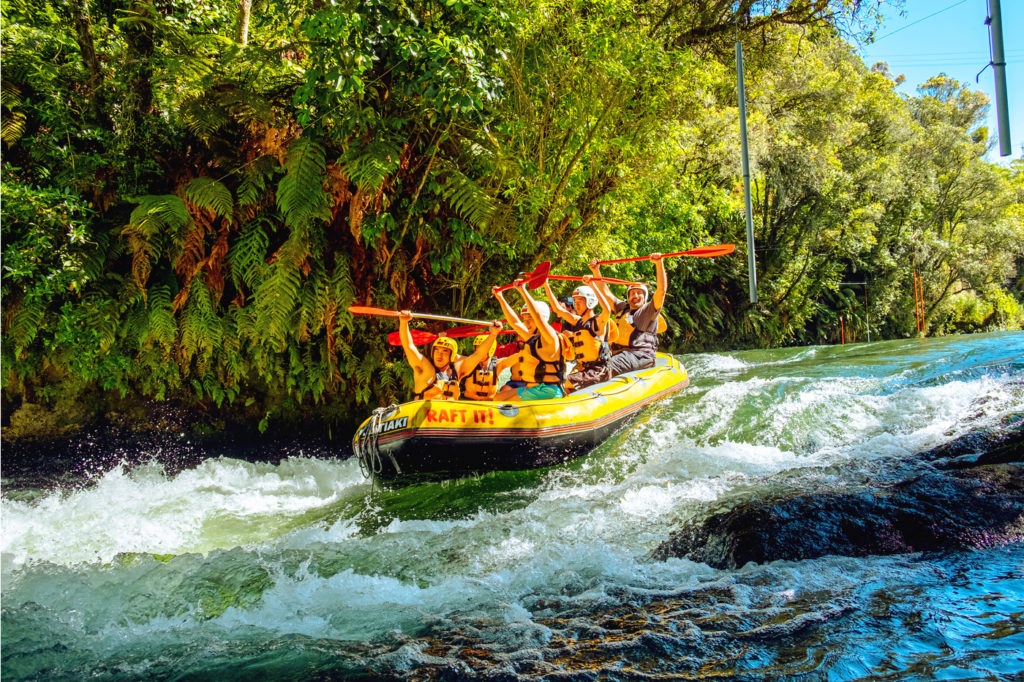
Go White-Water Rafting
New Zealand has a smorgasbord of epic rivers that provide out-of-this-world rafting and speed boating. In Rotorua, you’ll be able to experience one of the best in the country. White water rafting may at first appear to be something best left for the experts. But with a wide range of rapids, it’s possible to create an itinerary that is both thrilling and great for newbies.
From Rotorua, you’ll have the choice of two rivers depending on your desires and experience level. The Rangitaiki River has some Class IV rapids but they are fewer and farther between, with plenty of sightseeing mixed in. This is a great choice for families and first-timers.
But if you’re shooting for the stars, then you can’t beat the Kaituna River. Just 15 minutes from town, it features the tallest raftable waterfall in the world, the Tutea Falls. As you approach the 23-foot (7m) drop, you’ll be on the edge of your seat. But in a blink of an eye, it’ll be over and you’ll have a story to tell for years to come.
Join this Kaituna River Rafting Experience to experience 14 rapids and three waterfalls, complete with hotel pickup and drop off.
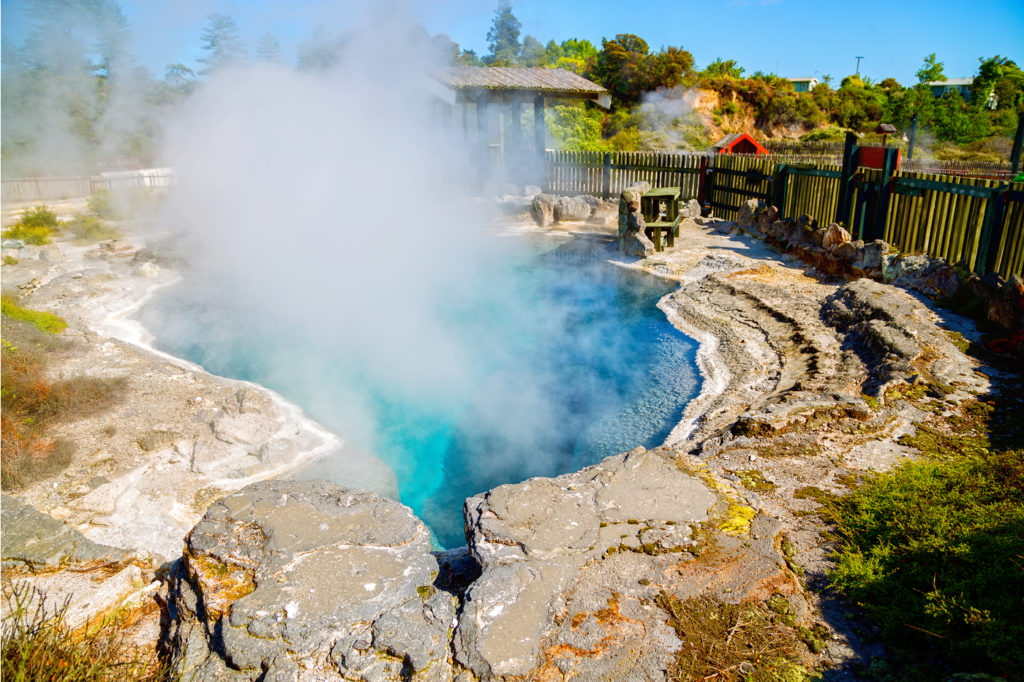
Explore Whakarewarewa: A Living Maori Village
From the moment you step into the open-air museum of Whakarewarewa, you’ll understand why it’s one of the best things to do in Rotorua. The fully functioning village sweeps you up and takes you on a mystical journey through Maori culture. You’ll explore their way of life, experience authentic traditions, and gain insight into their spirituality.
But I’m getting ahead of myself. The village is the home of the Tuhourangi Ngati Wahiao people, a Maori tribe with Polynesian descent. Their lineage in New Zealand can be traced back to the 1300s and for two centuries they’ve been welcoming visitors to their home.
After a welcoming introduction, all arrivals will be split into groups and begin exploring each section of the village. Learn how they use the power of the local geothermal landscape to not only cook, but bathe and heat their homes. In addition, you discover historic buildings such as the Marae (important meeting grounds), churches, and burial sites.
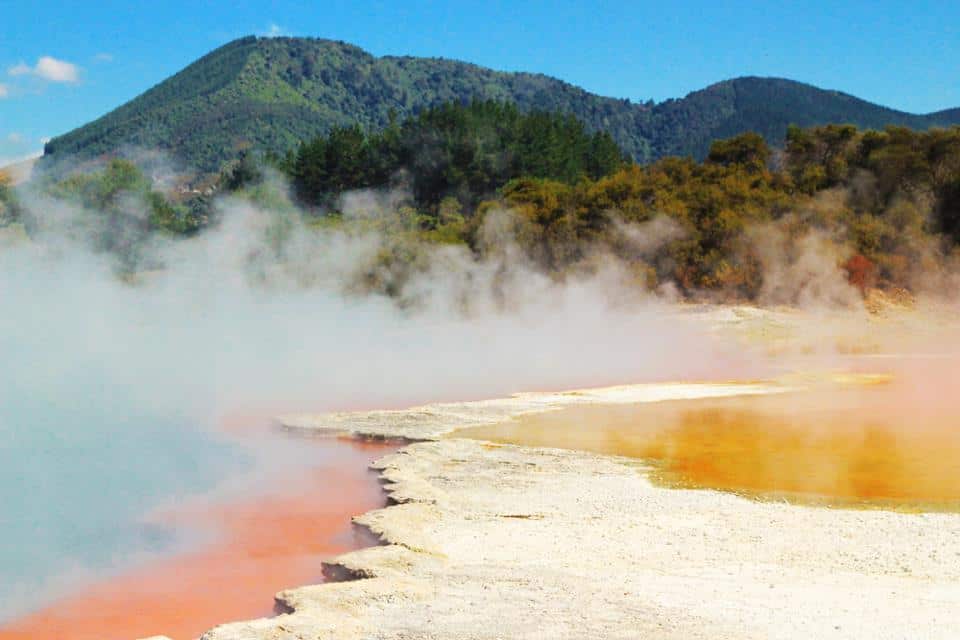
See Wai-O-Tapu Thermal Paradise
The United States may have Yellowstone, but New Zealand’s own Wai-O-Tapu is an inspiring geothermal landscape. The name translates in Maori to Sacred Waters and it’s easy to see why. A veritable kaleidoscope of colors awaits visitors who can wander between geysers and paint pots on the well-designed trail system.
Wai-O-Tapu was formed via a collapsed volcano, which led to the formation of a caldera. Along the path you’ll be met with a head of steam full of sulphur rising out of the earth. It’s visceral, and the bright rainbows of colors let you know that the nature surrounding you is very much alive.
Highlights of the geothermal paradise include the Lady Knox Geyser, which predictably erupts every day at 10.15am. Arrive early to get yourself a good spot and wait for the geyser to shoot water 65 feet (20m) into the air.
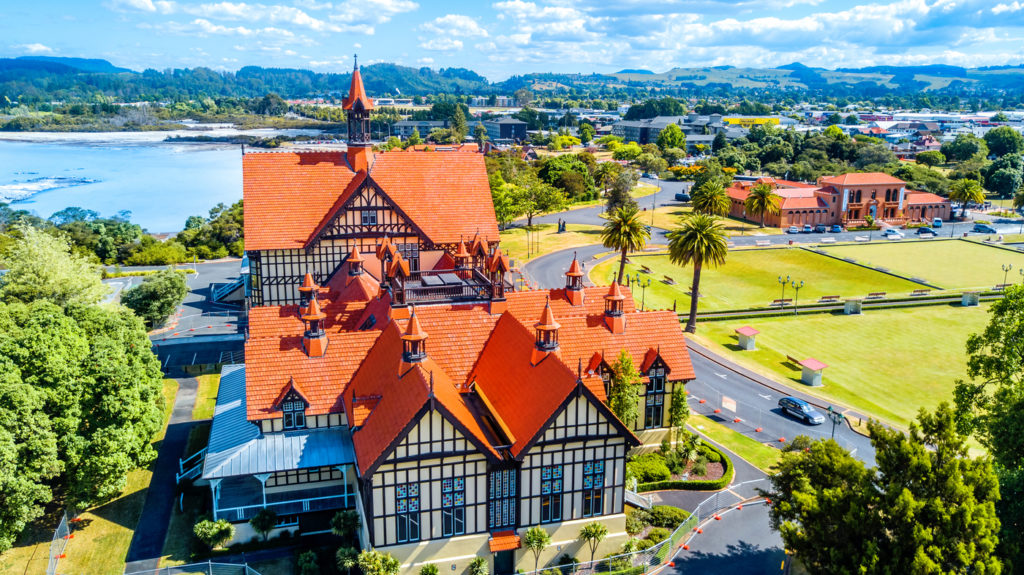
Visit Rotorua Museum
With some unforgettable experiences in the book, take the time to enjoy an attraction that won’t raise your heartbeat. As you approach the Rotorua Museum, you’ll appreciate the stately grounds and views of Lake Rotorua. The orange-roofed Tudor mansion lies at the end of the road and provides the full timeline of Rotorua’s history.
After entering the intricate facade, you’ll find a range of carefully curated exhibits that first bring you back to New Zealand’s pre-European age. Wander through the Nga Pumanawa o Te Arawa gallery with a series of beautiful pieces that explore the history of the local Te Arawa tribe.
Afterwards, head over to the cultural-anthropology section that dives into the heritage of the Polynesian explorers and early Maori tribes. Other highlights of the Rotorua Museum include the development of Rotorua from a European perspective, including its development as a tourist town in the 1880s so visitors could explore the city’s geothermal landscapes.
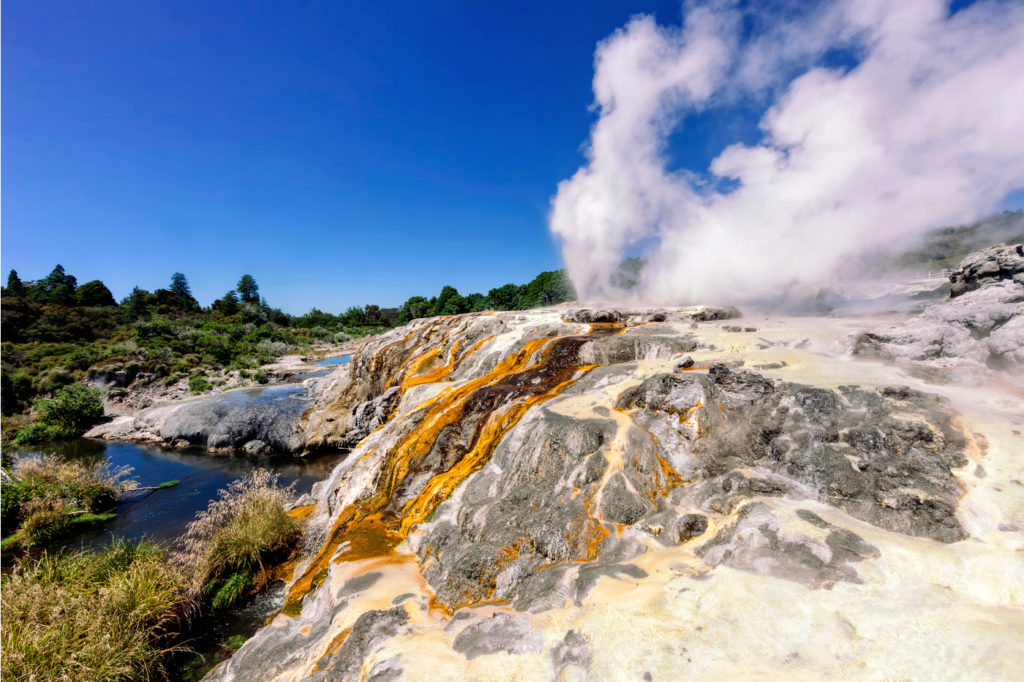
Get Up Close to the Pohutu Geyser
Wai-O-Tapu isn’t the only geothermal wonderful in Rotorua. In fact, there are four more that we are going to talk about. The town is a hotbed of geothermic activity, with each area having something distinct to offer travelers. Te Puia is home to the Pohutu Geyser, which is the largest not just in New Zealand, but the Southern Hemisphere.
The geyser is taller than Lady Knox, shooting to heights of around 100 feet (30m). But rather than have an exact time of eruption, Pohutu can often erupt non-stop day after day. Beginning in 2000, the geyser erupted for 250 days straight, ending in the following year.
In recent years, eruptions have only been lasting for a few minutes at a time, but are no less spectacular. Steps away is Te Tohu, another geyser with regular eruptions to add to your itinerary. As you wander between them both, you’ll stumble upon steaming springs and prismatic pools that will have you constantly reaching for the camera.
In addition to the colorful sights, explore the resident kiwi house, home to the nation’s iconic bird along with the Maori Arts and Crafts Institute.
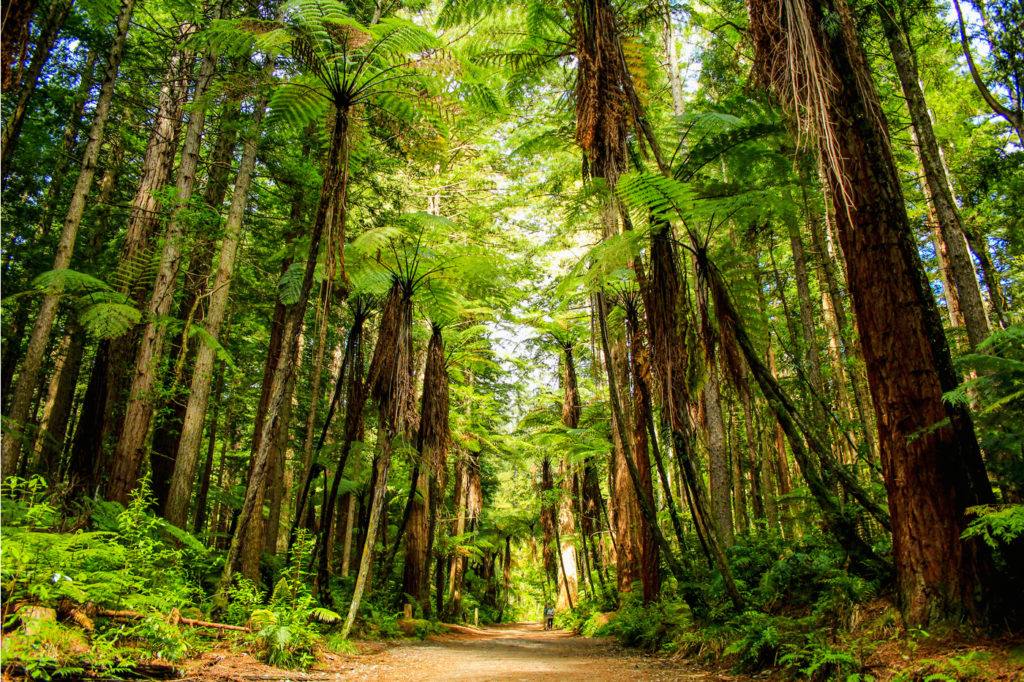
See the Other Side of Whakarewarewa
As you wander into the dense Whakarewarewa Forest, it’s hard to believe that you’re just minutes removed from the geothermal haven at Wai-O-Tapu. The difficult to pronounce forest is, thankfully, easy to navigate and has a wide-range of adventurous activities to embark on.
The local trails lead you to towering California Redwoods that will have you feeling every bit like you’ve teleported to Northern California. The 200 feet (60m) giants were actually planted at the turn of the 20th century and continue to grow with enthusiasm. In the morning, the light pokes through the canopy, bounding off the resident mist, creating a stunning sight for hikers, mountain bikers and horse-back riders.
The park is designed to facilitate each activity with a swath of separate trails to embark on. Hiking trails range from romantic strolls to strenuous multi-day treks into the vast backcountry. The horse riding trails venture through the park to far-reaching viewpoints. But it’s the mountain bikers that are really spoiled.
Whakarewarewa is home to 60 tracks spread out over 90 miles (145km). They’ve been around for years but still remain renowned across the globe, combining well-designed paths with insane scenery.
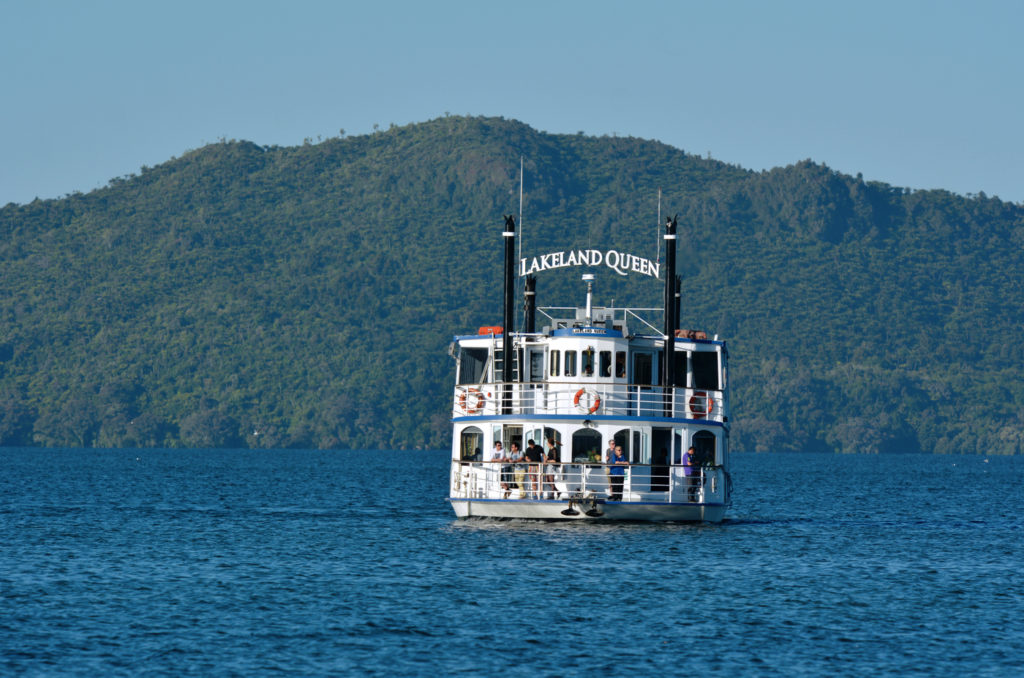
Cruise on the Lakeland Queen
In the 1980s, the Stewart brothers, Doug and Ian, came up with a brilliant idea. As they went to work at Lakeland Steel Products, they decided to create a floating restaurant that would provide tours of Lake Rotorua. Fast forward to the 21st century and the Lakeland Queen is one of the top ways to explore the lake.
Lake Rotorua was formed by volcanic eruption, carving out large swaths of land that were filled over the ensuing centuries. Because of its origins, the lake remains shallow throughout with an average depth of 33 feet (10m). Its strong concentration of sulfur gives the lake an ever-changing color as it switches from yellow to green to blue and back again. This contrasts with the sightly light blue glacial lakes on New Zealand’s South Island.
Upon the heritage-style Lakeland Queen, explore the lake on a breakfast, lunch or dinner cruise. The meals are also complemented by two full bars, great for enjoying a drink with a view. From your seat or on the deck, gaze upon the lake, countryside and the resident Mokoia Island.
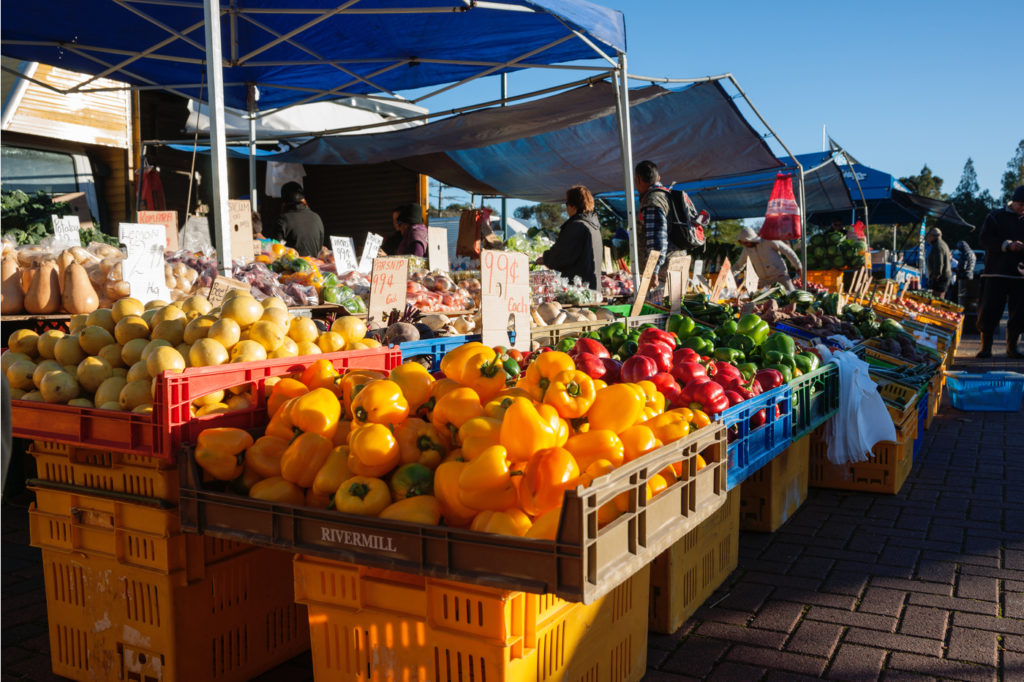
Visit the Local Markets
Your time in Rotorua will be spent venturing from one adventure to the next. When you aren’t exploring the calderas, you’ll be hiking and biking through the forest. But that doesn’t mean you shouldn’t take the time to explore the downtown streets of Rotorua.
Whether you’re a foodie or like the atmosphere of a good market, you’ll love the duo of markets that occur every week. Rotorua’s Farmers Market brings together the local community every Sunday at 9am. Wander the stalls seeking regional produce and artisanal delights, a great way to gather the goods for your next trip. Marketgoers can also stake out ready-made eats and bakery treats.
If Sunday isn’t on the cards, then experience the bright lights of the town’s Night Market. They occur each Thursday evening at 5pm in the summer and 4.30pm in the winter. The focus of the market is delighting your tastebuds, with a variety of international cuisine and kai, Maori for food.

Explore Waimangu Volcanic Valley
Next up on your adventure through Rotorua’s calderas is the majestic Waimangu Volcanic Valley. Explore the living and breathing landscapes teeming with paint pots and bright colors shaded by rising steam.
The valley is a hydrothermal system that came to be in 1886. On that day Mount Tarawera erupted, creating a rift. Now, you can explore the vast volcanic valley on a number of nature trails that seek to elevate the surrounding nature and not dominate it. The trails will guide you closely by geysers and vibrant craters to native vegetation with a surprising amount of bird life.
The Waimangu Volcanic Valley feels more like a protected park than a tourist attraction. Each hike can take up to two hours to complete because of how often you’ll likely stop to admire the prismatic ponds. The highlight being the immense blue Inferno Crater. Around the steaming hot bed is a lush green forest, a stunning contrast that is a sight to behold.
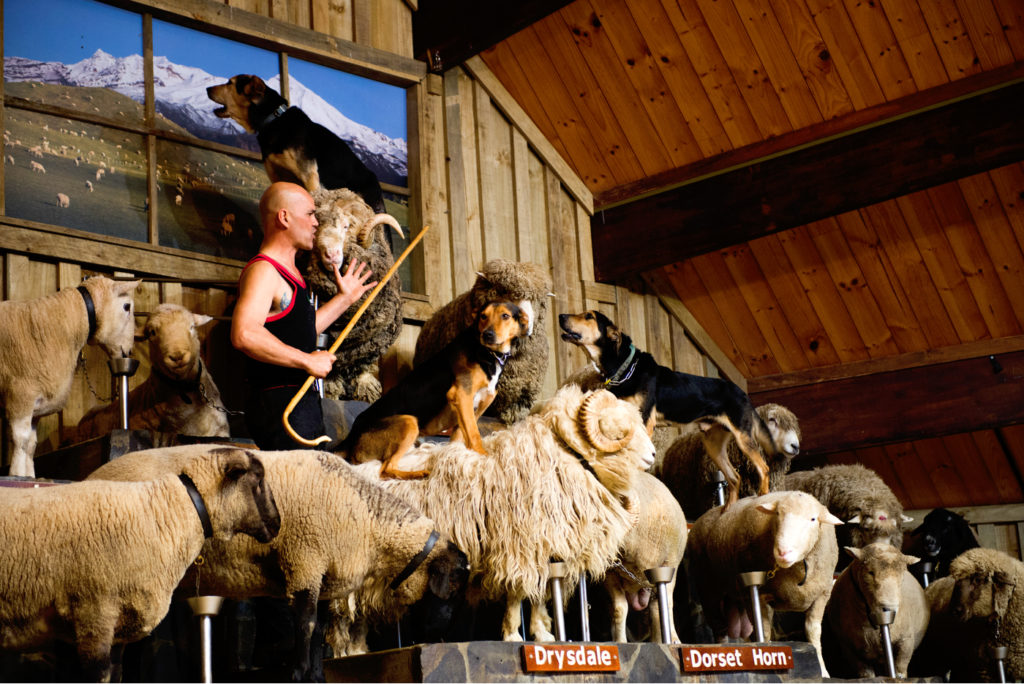
Take the Kids to Agrodome
New Zealand is home to a lot of sheep. In fact, the Land of the Long White Cloud has 6 sheep for every one person. Although down from the historic highs of 22:1, it’s easy to see why Kiwis are the butt of a lot of sheep jokes from their Aussie brethren across the Tasman Sea.
Just ten minutes north of town, Agrodome is a living sheep farm that covers over 350 acres. The working farm continues on as normal, while providing a ton of things to do for travelers, especially families. Kids will have a blast with each experience, including shearing demonstrations, a thrilling sheep dog race and the opportunity to feed your own lamb. If you’re brave enough, you can even try to milk a cow.
Included in the cost of admission, guests can venture through the farm on their own exciting tractor tour before exploring the Agrodome’s woolen mill. Finish off with the amazing farm show and a visit to the nursery, complete with newborn lambs.
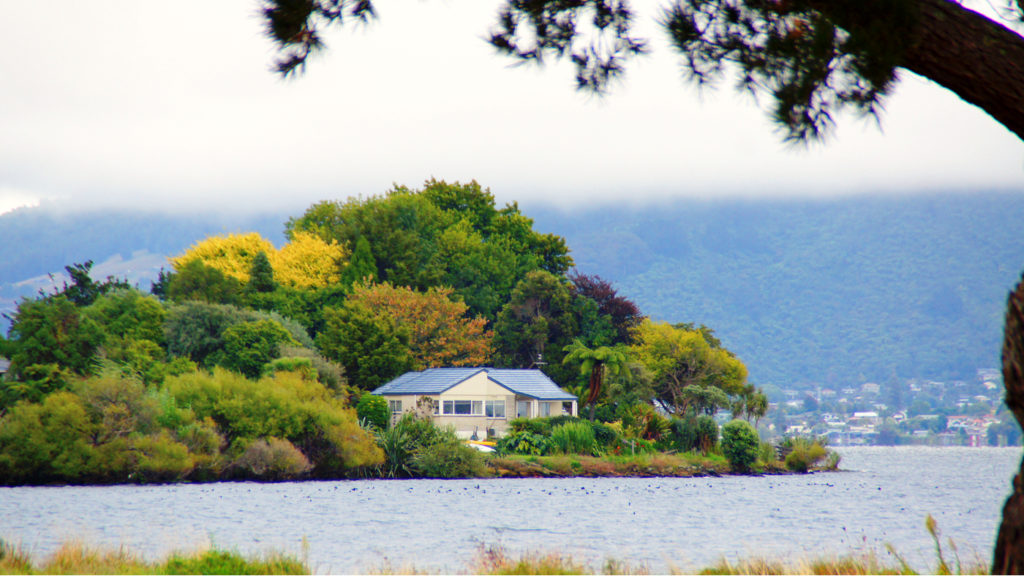
Visit Mokoia Island
From various viewpoints and on the Lakeland Queen, you’ll be able to look upon the sacred Mokoia Island. It’s placed in the heart of Lake Rotorua and is a central figure in Maori culture and mythology, including an enthralling love story. In short, Hinemoa and Tutanekai had to keep their star-crossed relationship a secret because of their family’s disapproval. After being separated, Hinemoa, guided by the sound of Tutanekai’s flute, swam across the lake to reunite with her soul mate on the island.
But beyond epic love stories, Mokoia Island is a stunning sanctuary and one of the best bird-watching locations in New Zealand. The veritable speck of land has been protected for over a century and features some of the rarest and endangered native birds. Those with a keen eye will be able to spot the saddleback, tui and pukeko. The real grand prize though is the kiwi bird.
There is a range of guided tours that will take you across to the island. Follow your naturalist guide on the several nature trails to learn more about this unique environment.
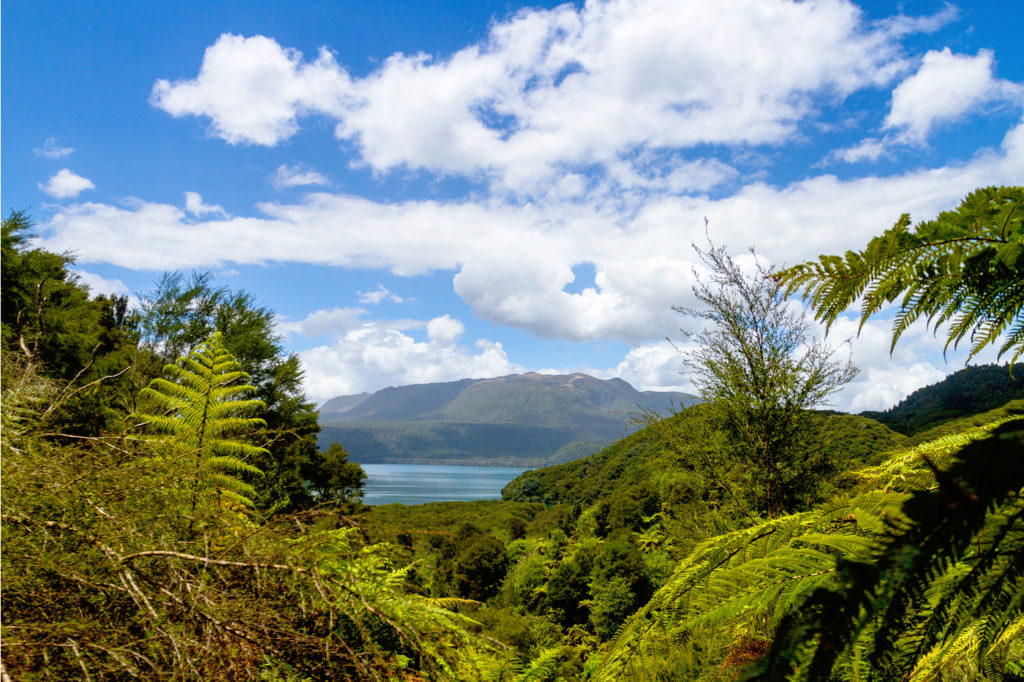
Complete the Tarawera Trail
When Mount Tarawera erupted in 1886, over 100 people died. The Tarawera Trail represents the return of humanity to the once lava-swept region. The challenging but rewarding overnight trek follows the lake’s shoreline through fresh-growth forests, lakeside springs and several viewpoint climbs. Before reaching Hot Water Beach.
The 9.3-mile (15km) one-way trail starts at Te Wairoa car park and caresses the beautiful lake until it arrives at the beautiful Kawaiki Bay. Here, you can take a break in the picnic area or jump into the lake for a refreshing dip. Afterwards, hikers will head slightly inland for several decent climbs towards Te Hinau Bay, passing the cold springs of Twin Streams along the way.
You’ll then face the hike’s biggest climb up to the panoramic Rotomahana Lookout, before a well-earned descent to Hot Water Beach. Book ahead to grab a camp site and explore the beach. Dig down to find heated water for a soothing bath that will have you ready for the follow day’s return trek.
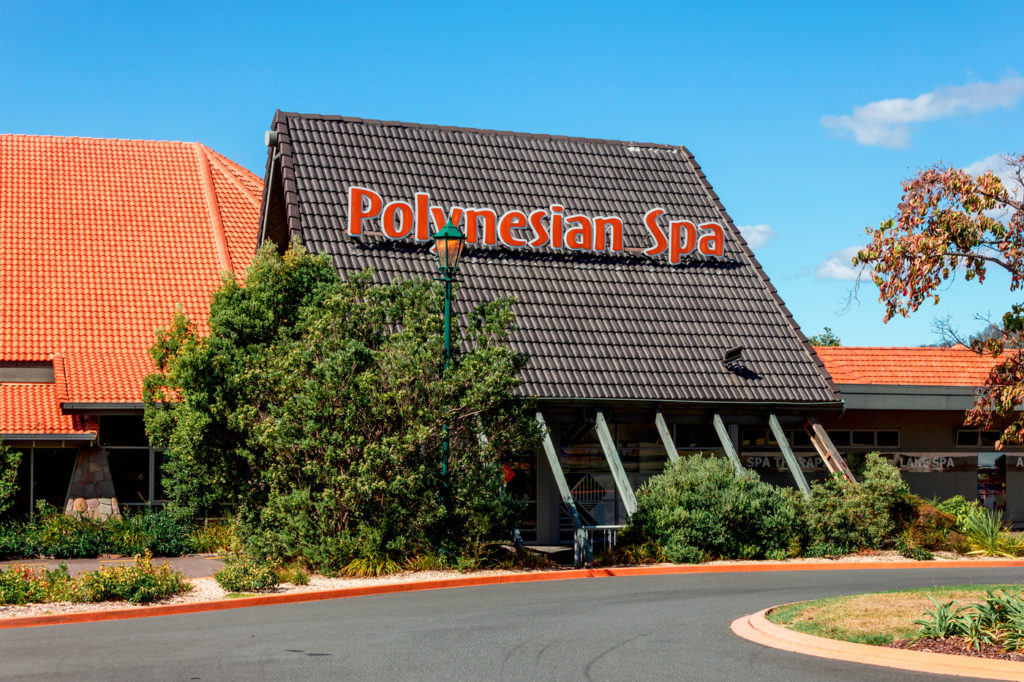
Relax at the Polynesian Spa
Speaking of relaxing baths, if you’re feeling the need for rejuvenation, head to the Polynesian Spa for a revitalizing experience. The spa is just back from the shores of Lake Rotorua and comprises almost 30 pools, many with their own views. These pools are sourced from two natural springs in the area, the Rachel and the Priest. Both have their own qualities and benefits.
The Rachel is teeming with alkaline and focuses on renewing your skin. The Priest Spring is a wonderful option for adventurous travelers who have grown achy after many hikes. Its water is somewhat acidic and relieves muscle pains while giving you a burst of energy.
The pools are split up into different sections, including family-oriented pools, the large pavilion pools, along with romantic lake view and private spas. Whether you’re achy or just want a memorable evening with your partner, the choice is yours.
The Polynesian Spa also offers a range of massages and beauty treatments.
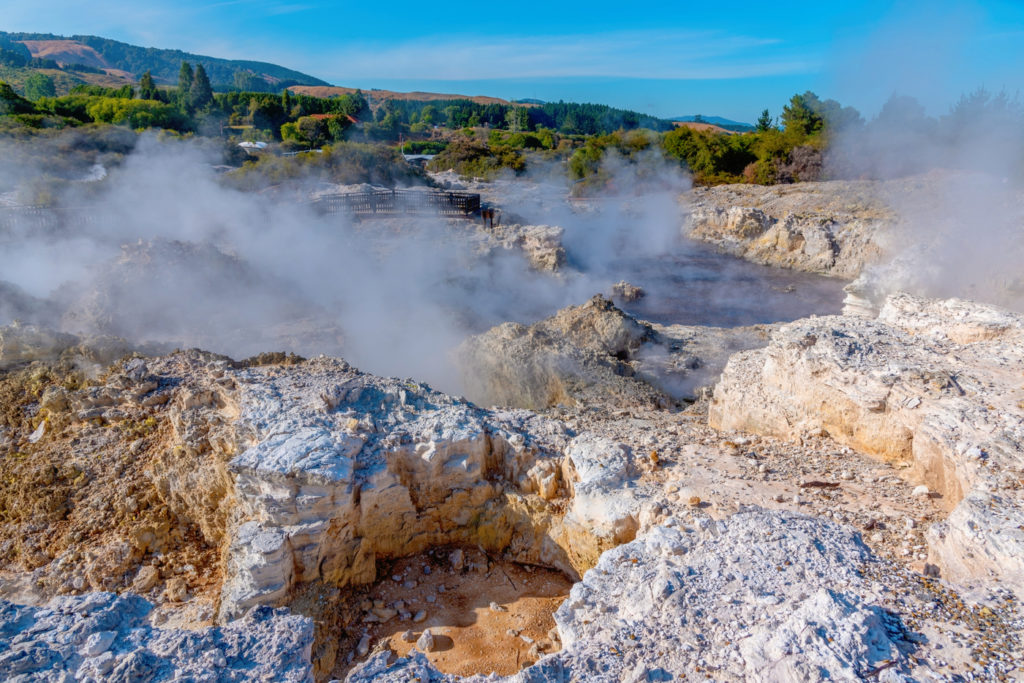
Pay a Visit to Hell’s Gate
When Irish playwright Gerald Bernard Shaw visited this location in 1934, he was taken aback by the sight of steam rising from the boiling mud, saying “this could be the very gates of hell”. Such was his confrontation, that it’s believed he reneged on his atheist views. Ever since, the location has been known as Hell’s Gate.
However, the story of Hell’s Gate goes well beyond Mr Shaw. In fact, the boiling mud is a geothermal spa whose healing qualities have been revered in Maori culture for more than 800 years. The mud is teeming with nutrients that are said to help with arthritis and clean the skin.
It’s a tradition that continues to this day, albeit with people from around the world. Hell’s Gate is a lovely alternative to the Polynesian Spa (albeit without the views), with visitors able to indulge in the mud baths and experience a range of spa treatments.
On this guided tour, explore Hell’s Gate Geothermal Reserve before covering yourself in invigorating mud.

Hike the Tongariro Alpine Crossing
In a central, yet remote section of New Zealand’s North Island, the Tongariro Crossing is arguably the country’s most famous hiking trail. It is an over-mountain epic that remains relatively accessible outside of the winter months.
The trail begins two hours south of Rotorua, making the lakeside town one of the better spots to base yourself for the memorable hike. Importantly, as the trail is not a loop, you’ll want to have transport on the other side. There are shuttles departing Rotorua for Tongariro that will also be able to bring you back.
The shuttles will depart at 4.30am allowing you to start the 12-mile (19.4km) hike nice and early. The alpine crossing features martian like landscapes, seemingly combining the soaring mountains of the South Island, with the local volcanic geography. Along the way, you’ll cross paths with Mt Doom from Lord of the Rings. However, you can’t trek to the peak.
As Tongariro is a remote summit, you’ll want to bring plenty of water for the 6 to 8 hour journey. As you reach the arid alpine area, you’ll have expansive views all around, with the brown rock surface contrasting (hopefully) with the blue sky above.
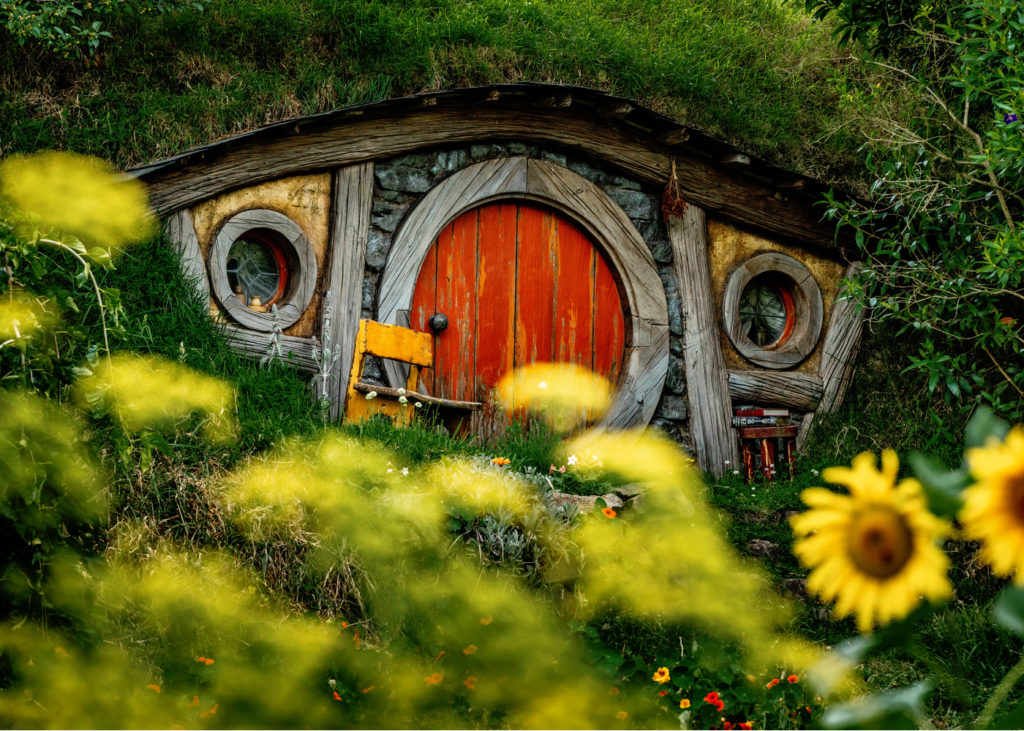
Explore Hobbiton
The iconic Lord of the Rings novels and films have been inspiring travelers to explore Middle Earth (New Zealand) for two decades. Just an hour north of Rotorua, in the charming town of Matamata, is the set of Hobbiton. Featured in both the Lord of the Rings Trilogy and the Hobbiton films, this seat was created specifically for the films.
It’s set on Alexander Farm, a private estate that has been masterfully preserved by the owners throughout the years. The owners themselves lead guided tours of the village, giving fans of the movies an unforgettable first-hand experience with the iconic homes and fairytale-like landscapes.
Walk the same paths as some of your favorite film characters as you spot the iconic Hobbiton homes and their circular doorways tucked into the lush green countryside. You’ll also wander by the famed Inn and Mill, affixed to the side of the flowing river as if life in Middle Earth continues without interruption.
Experience Hobbiton alongside an expert guide on this movie set tour.
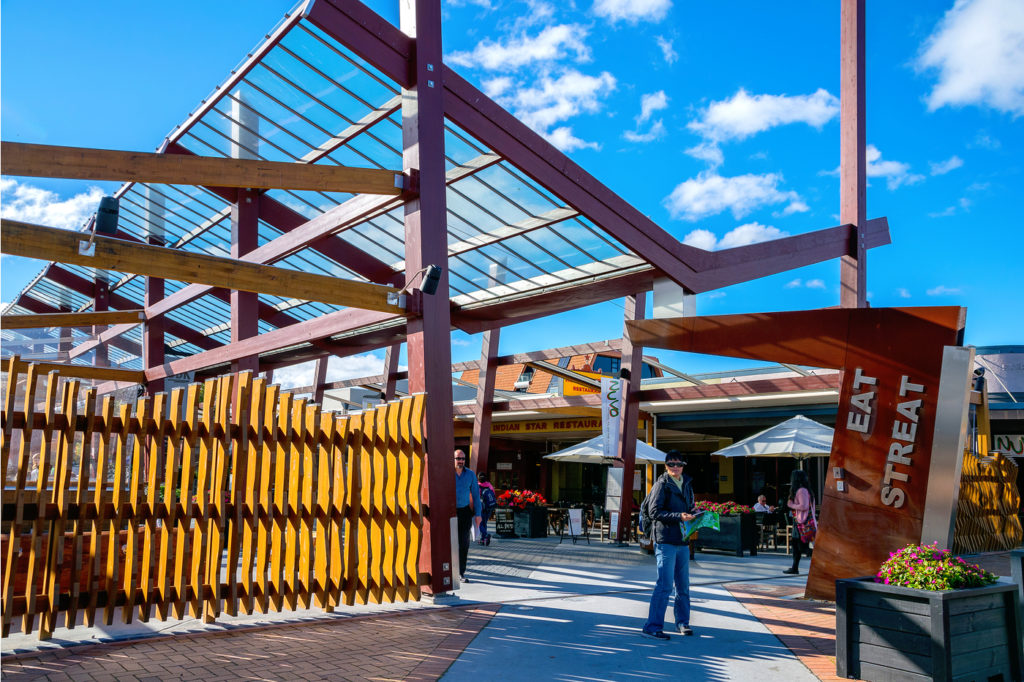
Toast to Your Travels on Eat Streat
There’s no doubt that Rotorua is an adventure mecca, but locals take their food extremely seriously. There’s no better example of this than the aptly named Eat Streat, aka Tutanekai Street. A large swath of the best restaurants in Rotorua are found in this sensational row of grand gastronomy. It’s in the middle of town, and some of the top eateries include the exceptional Atticus Finch. Come here for culinary innovation and mouthwatering plates designed to be shared and washed down with craft cocktails.
You’ll also discover a range of international cuisine that always hits the spot. Including the beloved Saigon 60s for Vietnamese, Tunisian at Ali Baba and El Mexicano Zapata for zesty Mexican.
If you’ve fallen in love with Maori cuisine after Tamaki, get along to Mokoia Restaurant or the Regent Room, which has a specialized Maori degustation menu.

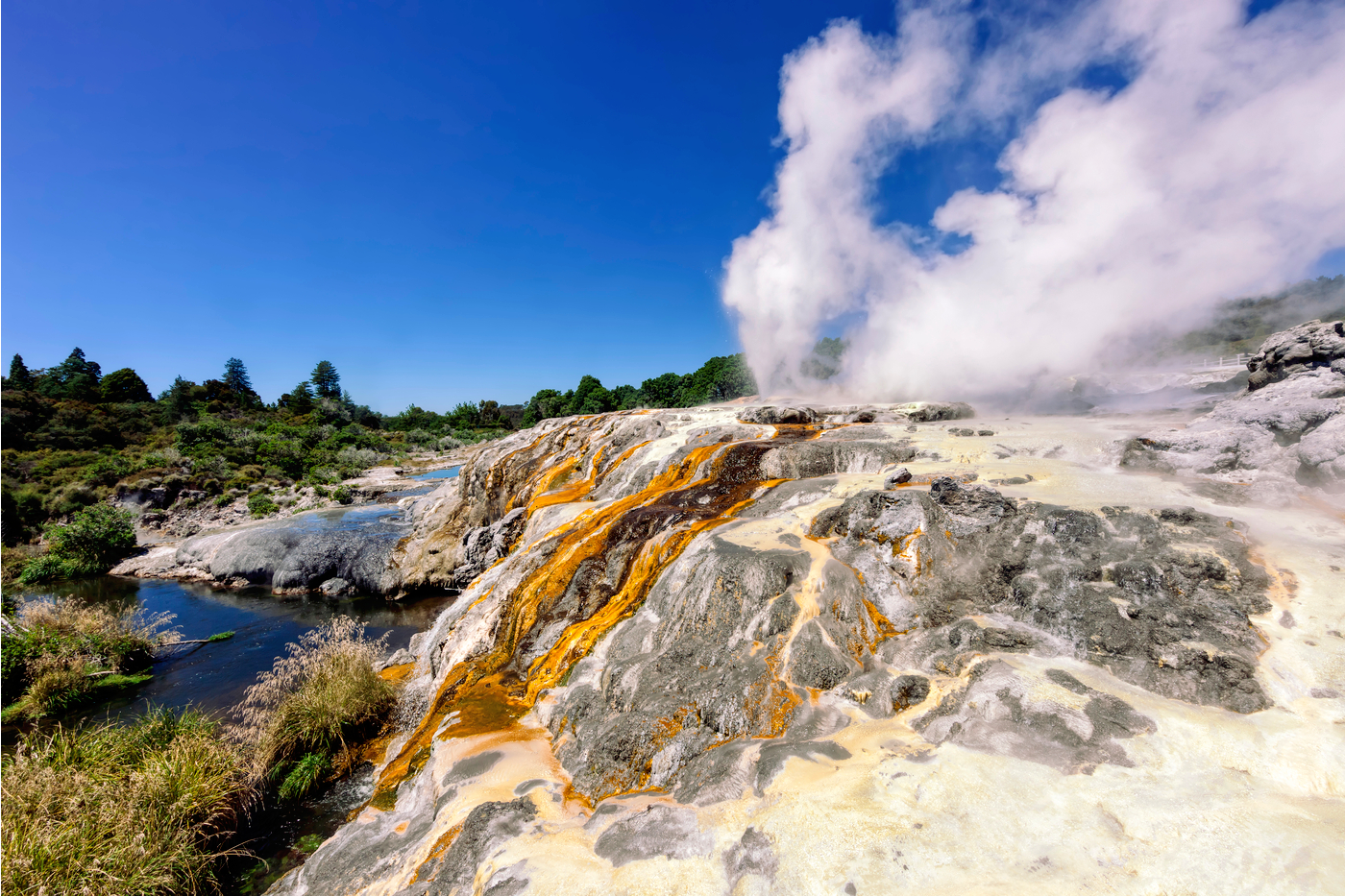
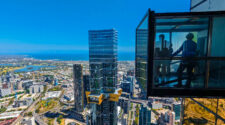

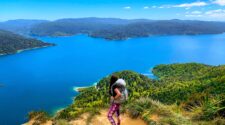
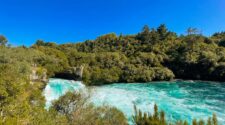
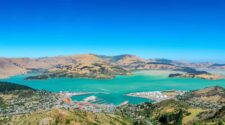
Totally missed this on my way through the north island – whacking it on the to do list for my return :)
The one time I went to Rotorua was after a whitewater kayaking trip nearby with a group from Auckland (all that geothermal activity= warm water when you fall in yay) and some guys asked me if I wanted to go to the spa. Answer was yes, and that’s all I’ve seen in Rotorua (but then I’ve been to Yellowstone and saw the original geysir in Iceland).
Enjoying your posts as it was over 5 years since I lived in NZ- need to get back but I keep getting sidetracked by all the other places in between. :)
This place looks amazing! New Zealand has never ranked highly in my places to visit but, well, it might now!
Did you drive a couple of minutes up the road and see the bubbling mud pools? They are FREE and I thought they were one of the best!
The top photo looks hot! and I am not talking about the geothermal activity :)
Beautiful photos, Lauren! Colors are unbelievable!
Awesome and colorful photos! Spectacular landscape! If it doesn’t take much of traveling NZ, I will go there asap…..
Amazing post, your pictures are stunning!!
WOW, gorgeous pics … I love volcanoes and now I want to see this one in person! You look lovely and in the right place at the right time in your life, beautiful friend!
Big smooch and hugs,
Gina
Rotorua is indeed smelly, but SO worth it in my opinion! There are very few places I know of where you can see crazy stuff like this so easily!
Why did the boys not want to go there? This looks awesome! Reminds me of the film Dantes Peak for a strange reason.
Because they’d already visited before and knew how much it smelt :-)
That blue crater looks incredible! Who cares if it’s a bit smelly right!
That’s so pretty!! I’m going to have to go back because we never did that during our short stay in Rotarua. Also, never take those boys to Beppu in Japan. The smell in Rotorua is nothing compared to the park there.
I never made it to Rotarua but in Abel Tasman National Park today :)